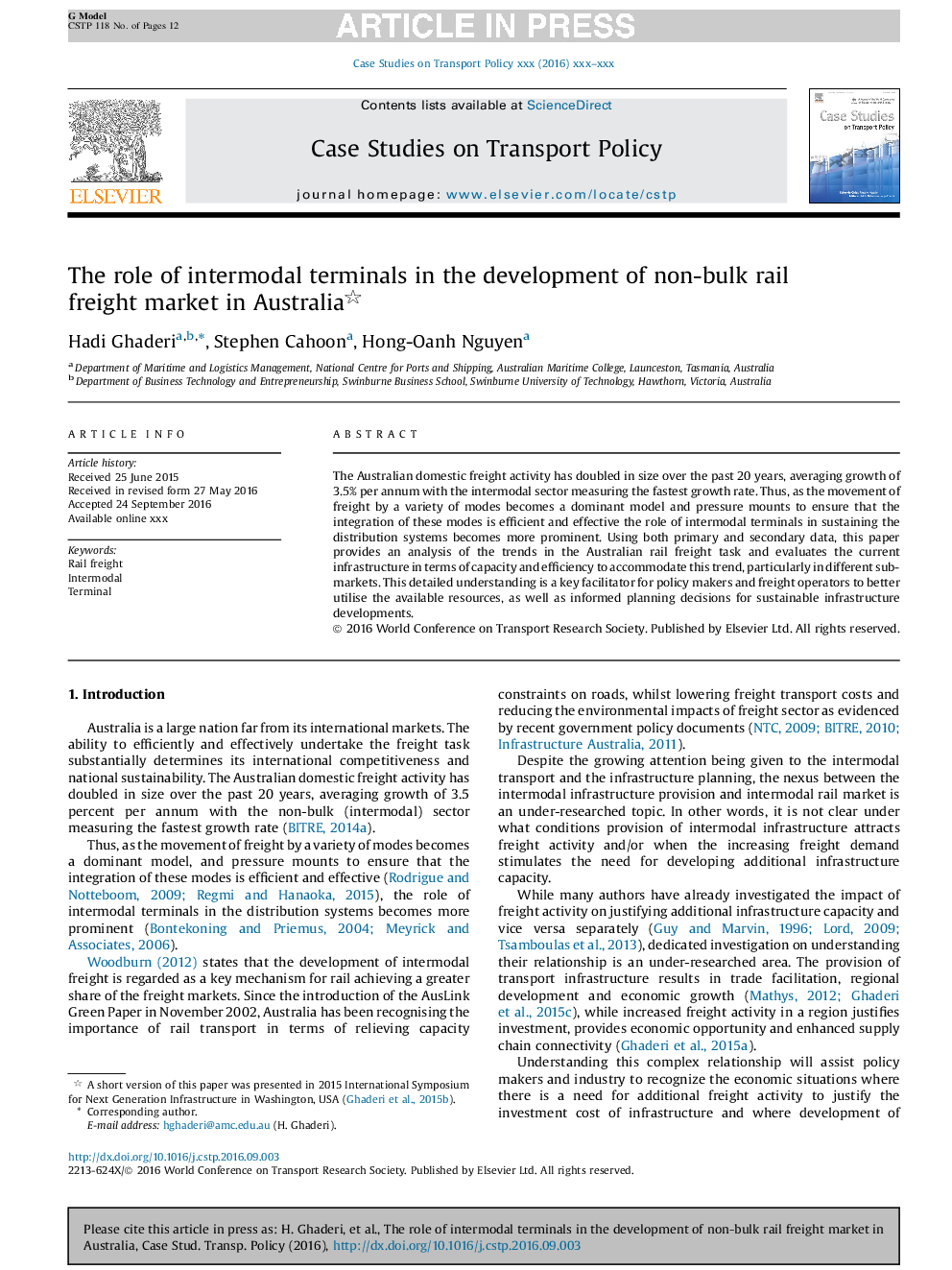| Article ID | Journal | Published Year | Pages | File Type |
|---|---|---|---|---|
| 4911685 | Case Studies on Transport Policy | 2016 | 12 Pages |
Abstract
The Australian domestic freight activity has doubled in size over the past 20 years, averaging growth of 3.5% per annum with the intermodal sector measuring the fastest growth rate. Thus, as the movement of freight by a variety of modes becomes a dominant model and pressure mounts to ensure that the integration of these modes is efficient and effective the role of intermodal terminals in sustaining the distribution systems becomes more prominent. Using both primary and secondary data, this paper provides an analysis of the trends in the Australian rail freight task and evaluates the current infrastructure in terms of capacity and efficiency to accommodate this trend, particularly in different sub-markets. This detailed understanding is a key facilitator for policy makers and freight operators to better utilise the available resources, as well as informed planning decisions for sustainable infrastructure developments.
Keywords
Related Topics
Physical Sciences and Engineering
Engineering
Civil and Structural Engineering
Authors
Hadi Ghaderi, Stephen Cahoon, Hong-Oanh Nguyen,
